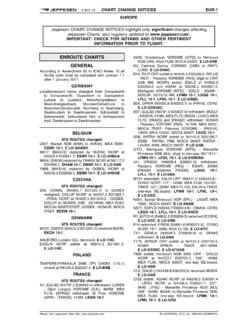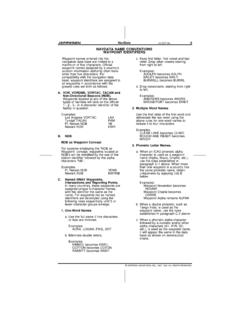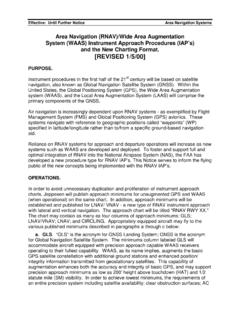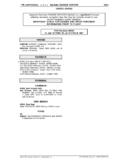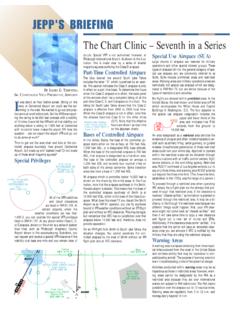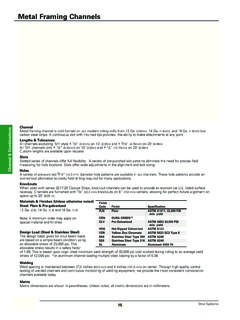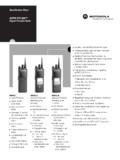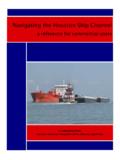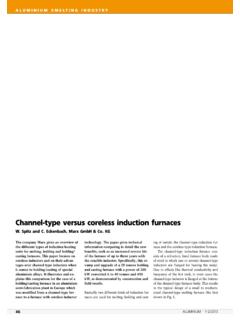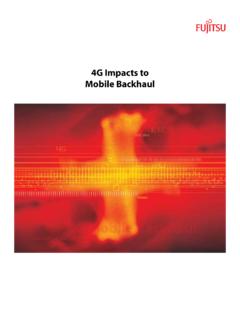Transcription of FRA 99-F IMPLEMENTATION OF 8.33 kHz CHANNEL …
1 FRA 99-F6 AUG 99 JEPPESEN SANDERSON, INC., 1999. ALL RIGHTS OF kHz CHANNEL SPACING ABOVE FL245 IN THE ICAO EUR REGION EFFECTIVE 7th OCT 1999.(extract from EUROCONTROL User Guide, 4th edition. For further information and updaterefer to ).GeneralDue to a shortage of VHF r/t frequencies inthe European airspace a decision has beenmade to reduce the current spacing from 25kHz to kHz. This will result in anincrease in available frequencies whichpermits the creation of new control sectors,thereby contributing to an increase in ATMcapacity in the ECAC area. An increase incapacity is expected for Summer of operation and mandatory carriageThe mandatory carriage of kHz radioequipment will be effective from 07 OCT 99throughout the ICAO European Region aboveFL 245. A vertical extension is possible of operationStates initially implementing kHzoperations are: Austria, Belgium, France,Germany, Luxembourg, Netherlands equipmentAircraft must be equipped with twoindependent sets of kHz exemption can be granted within sectorswhere kHz CHANNEL spacing is in States are responsible for the publicationof exemptions outside the PLANThe aircraft is equippedLetter "Y" must be inserted in field 10 of theflight flight plans above FL 245 assumethat the aircraft is equipped unless it isdifferently specified in item Q (EQPT field).
2 The aircraft is not equippedThe aircraft operator must check whether ornot the flight is exempted. If exempted, theindication STS/EXM833 must be inserted infield 18 of the flight plan. If applicable, thisindication should also be inserted in the the RPL is filed as compliant and a aircraft is used on the day of operation,a change message must be issued not earlierthan 20 hours prior to EOBT. The requestedcruising level must be modified as IFPS will reject a flight plan notcomplying with these rules when theaerodrome of departure is within the IFPS zone and will add a warning in the FPL whenthe aerodrome of departure is outside of theIFPS failureIn this case, the standard procedure in theairspace concerned has to be aircraftFrequent users of the airspace must beequipped with radios; infrequent userswithout capability but with UHF, will bepermitted to use UHF, where UHF isavailable.
3 In this case, the letter "U" must beinserted in field 10, and the exemptionindicator STS/EXM833 must be inserted infield 18 of the flight other exemptions may also be applicableto State that a State aircraft without either UHF is not allowed to enter flights and SAR flightsDue to the urgency of the situation, theseflight plans are not rejected by the IFPS, evenif not correctly , the carriage requirement appliesequally to HOSP/SAR flights, and verificationof capability will be requested by aircraft without either UHF or is notallowed to enter phraseology has been approved byICAO. It is complementary to the existingone. The kHz frequencies must beidentified in pilot and controller 99-F26 AUG 99 JEPPESEN SANDERSON, INC., 1999. ALL RIGHTS OF kHz CHANNEL SPACING ABOVE FL245 IN THE ICAO EUR REGION EFFECTIVE 7th OCT request the capabil-ity of the radio equip-mentAdvise eight point three threeequipped To indicate kHzcapabilityAffirm eight point three threeTo indicate lack of capabilityNegative eight point three threeTo indicate UHF capa-bilityUHF equippedTo request the status inrespect of exemptionAdvise eight point three threeexemption statusTo indicate kHzexempted status(aircraft call sign) Exempted eightpoint three threeTo indicate that a cer-tain clearance is givenbecause otherwise anon-equipped aircraftwould enter the airspaceof mandatory carriage(clearance/instruction) Due eightpoint three three requirementTo request the pilot toconfirm the selec-tion- Confirm eight point three three- Affirm eight point three threechannel (name)
4 Transfer of controland/or CHANNEL change- Contact (unit call sign) CHANNEL (name)- At (or OVER)(time or place)contact (unit call sign) CHANNEL (name)- If no contact (instructions)- Stand by CHANNEL (name) for(unit call sign)- Request change to CHANNEL (name)- CHANNEL change approved- Monitor (unit call sign) CHANNEL (name)- Monitoring CHANNEL (name)- When ready contact (unit callsign) CHANNEL (name)- Remain this channelEquipment standardsThe kHz spacing standardsand definition have been approvedby the following bodies: Aeronautical Mobile Communica-tion Panel (AMCP) "Standard and RecommendedPractices". European Organization for CivilAviation Equipment (EUROCAE)- "Minimum Operational Perfor-mance Standards". Requirements and TechnicalConcepts for Aeronautics(RTCA) - "RTCA SC-172/D0-186A". Airlines Electronic EngineeringCommittee (AEEC)-" kHz mode to ARINC 716". European TelecommunicationStandardization Institute (ETSI) -"Document ETS 676 - RadioTransmitters and Receivers andAeronautical Stations for Aero-nautical Mobile Service operatingin the VHF Band".
5 Frequency ListSpacing(kHz)Frequencies(MHz)25 kHz mode"frequency" kHz mode" CHANNEL " operations, the word " CHANNEL " must be used by the pilot and the controller as a uniqueidentification to avoid a publications-50 or 25 kHz shown as is shown as shown shown as kHz spacingThe " CHANNEL numbers" are always shown as three decimal places( ).ENDRETAIN THIS BULLETIN UNTIL ADVISED TO DESTROY.
